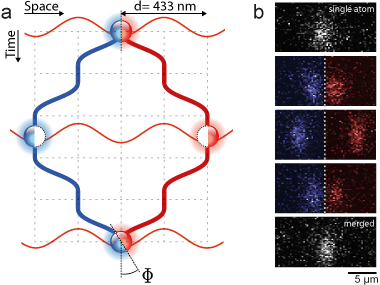
We have recently shown that the wave function of a single atom can be manipulated to form the atom-analogue of a Mach-Zehnder interferometer: a single atom is split over a mesoscopic distance and coherently recombined to read out the quantum phase information. By using trapped atoms in a spin-dependent optical lattice, the interfering quantum paths can be steered with very high precision, while the atomic wavepackets remain tightly localized. The coherent splitting over up to 10 µm demonstrad here is implemented from of a sequence of about 100 discrete elementary quantum operations, which can be used to "program" complex interferometer geometries from basic building blocks. In this way, control over neutral particles is pushed to a new level. Our results have recently appeared in PNAS, see also the corresponding press release.
